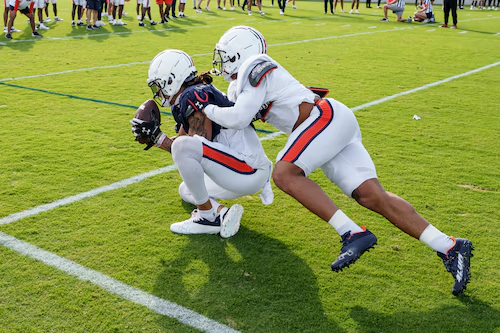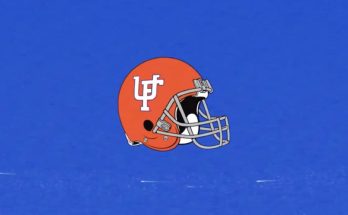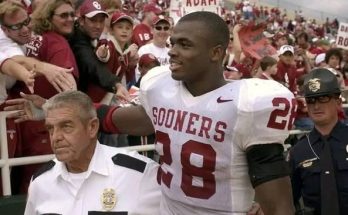Notes from the No-Huddle: Auburn Football’s Spring of Change
Auburn football is heading into the 2024 season with a fresh perspective and a host of changes that will shape the program’s future. Spring practice is always a time for evaluation, but this year, it’s particularly significant as the Tigers adjust to coaching staff alterations, a restructured roster, and new offensive and defensive schemes. Here’s a breakdown of the key storylines dominating Auburn’s no-huddle attack this spring.
New Faces in Key Coaching Positions
One of the biggest changes in Auburn’s spring camp comes from the coaching staff. Head coach Hugh Freeze has made strategic hires and adjustments to optimize performance. A new offensive coordinator, expected to bring a more dynamic passing attack, has been a focal point of offseason discussion. Similarly, changes on the defensive side include a new defensive coordinator whose aggressive style is already evident in practice.
Auburn has also seen adjustments in positional coaching, with particular emphasis on developing the offensive line and defensive backfield. The offensive line struggled with consistency last season, and their improvement is crucial to Auburn’s success in the fast-paced SEC environment.
Quarterback Battle Heats Up
Auburn’s quarterback situation is a hot topic among fans and analysts. Last season’s inconsistency at the position led to struggles in both passing efficiency and offensive rhythm. This spring, the Tigers have a quarterback competition featuring returning players and new transfers.
One of the biggest additions is a transfer quarterback who brings experience and playmaking ability. His arrival has intensified the battle, as he competes against a returning starter and a highly-touted freshman. Freeze and the offensive staff have emphasized decision-making, accuracy, and leadership as key attributes in determining the starter.
Offensive Scheme Adjustments
The Tigers are refining their offensive identity under new leadership. Last season, the team struggled to find a consistent rhythm, often relying heavily on the running game. This spring, Auburn is placing a renewed focus on balance, with more emphasis on an up-tempo passing attack.
The wide receiver corps is expected to play a more significant role, and coaches have been working to improve route-running, separation, and catching consistency. The addition of a couple of speedy, dynamic receivers via the transfer portal should provide a much-needed boost. Running backs, traditionally a strength for Auburn, will also be asked to contribute more in the passing game, adding versatility to the attack.
Defensive Adjustments and Emerging Leaders
Auburn’s defense is undergoing changes, particularly in scheme and philosophy. The Tigers are transitioning to a more aggressive, attack-minded defense that emphasizes speed and disruption. The new defensive coordinator is implementing a system that focuses on pressuring the quarterback and forcing turnovers.
One of the major storylines is the emergence of young defensive stars. Several underclassmen have stood out in spring practices, showing promise as future leaders of the unit. The linebacker corps, in particular, looks improved, with a blend of experience and youthful energy. In the secondary, Auburn is looking to replace key departures, and competition for starting spots is fierce.
The Offensive Line Makeover
Perhaps the most critical area of improvement this spring is the offensive line. Auburn’s struggles in the trenches last season were well-documented, leading to inconsistency in both the running and passing games. This offseason, Auburn has added multiple offensive linemen through recruiting and the transfer portal.
Early reports from spring practice suggest that the unit is making strides under the guidance of a new offensive line coach. Increased physicality and improved communication are key focal points, and Auburn is hopeful that this group will be significantly better than last season’s unit.
Special Teams and Other Key Developments
Special teams play is often overlooked, but Auburn is working on refining this aspect of the game as well. With a new kicker stepping into a starting role, consistency in field goal attempts and extra points is being emphasized. Additionally, Auburn is experimenting with new return specialists to add explosiveness in the return game.
The Tigers are also using spring practice to evaluate depth at various positions. Injuries and transfers have reshaped the roster, and developing capable backups will be crucial heading into the fall.
Looking Ahead to the Fall
With so many changes and adjustments, Auburn’s spring practice is setting the stage for what should be an intriguing season. While there are still plenty of questions to answer, the energy around the program is noticeably different. The coaching staff’s ability to implement new schemes and develop talent will be key factors in determining how competitive Auburn will be in the SEC race.
As Auburn fans eagerly await the return of fall football, all eyes will be on how these changes translate to game-day performance. One thing is clear: Auburn football is evolving, and the no-huddle approach is at the center of this transformation.



